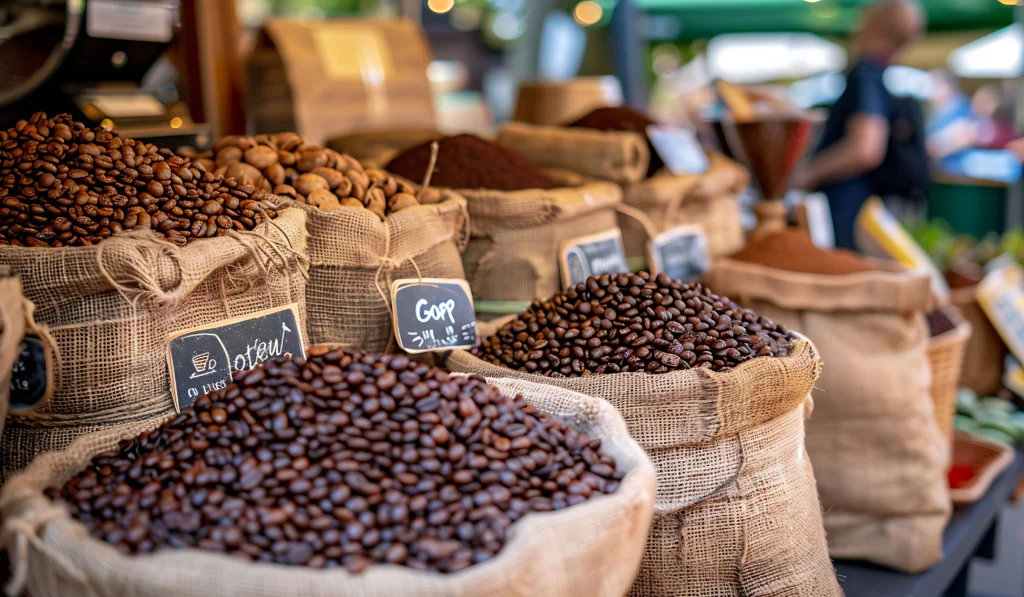The Difference Between Ugandan Green Coffee and Other Coffees: A Comprehensive Guide
Coffee is one of the most beloved beverages worldwide, enjoyed for its rich flavors, aromas, and energizing qualities. However, not all coffees are created equal. Ugandan green coffee holds a distinct place in the global coffee market due to its unique origin, varieties, cultivation methods, and flavor profiles. Understanding how Ugandan green coffee differs from other coffees—such as those from Latin America, Ethiopia, or Asia—can help consumers, roasters, and traders appreciate its special qualities and decide why it might be the right choice for their needs.
Origin and Growing Conditions
Uganda is widely recognized as the birthplace of Robusta coffee and also produces significant amounts of Arabica coffee, especially in high-altitude regions such as Mount Elgon, the Rwenzori Mountains, and the Lake Victoria Basin.
Robusta Coffee from Uganda:
Native to the dense rainforests of Uganda, Robusta thrives at lower altitudes (around 600 to 1,200 meters). The volcanic, mineral-rich soils and tropical climate contribute to the robustness and characteristic earthy flavors. Ugandan Robusta tends to have a strong body, higher caffeine content, and a bold, sometimes smoky taste that makes it popular for espresso blends and instant coffee production worldwide.
Arabica Coffee from Uganda:
Grown at higher altitudes (1,200 to 2,300 meters), Ugandan Arabica benefits from cooler temperatures and well-distributed rainfall. The Arabica beans are prized for their bright acidity, floral aromas, and complex fruity or wine-like flavor notes. This differentiates Ugandan Arabica from the more common Latin American Arabicas, often noted for nuttier or chocolatey profiles.
In contrast, Latin American coffees like those from Colombia or Brazil are generally grown at high altitudes with consistent climates, producing balanced, smooth coffees often characterized by caramel and chocolate notes. Ethiopian coffees, renowned for their heirloom Arabica varieties, often have distinct floral and citrus profiles due to unique heirloom genetics and dry processing methods. Meanwhile, Asian coffees (such as those from Indonesia or Vietnam) are often robust, earthy, and spicy, especially the well-known Indonesian Sumatra coffees.
Varietal Differences
Uganda’s coffee portfolio is dominated by:
Robusta (Coffea canephora): Uganda is one of the largest producers of Robusta coffee globally, which is generally stronger, more bitter, and higher in caffeine than Arabica. Robusta thrives in Uganda’s lowland tropical forests.
Arabica (Coffea arabica): Though less abundant, Ugandan Arabica is highly regarded for its quality and flavor complexity, grown in distinct mountainous microclimates.
Other coffee-producing regions may focus primarily on Arabica varieties, as they command higher prices and are preferred for specialty coffee markets. For example, Ethiopia is almost exclusively Arabica, while Vietnam primarily produces Robusta, but with less diversity in processing and flavor focus compared to Uganda.
Processing Methods
Ugandan coffee processing methods influence flavor and market positioning:
Washed (Wet) Processing: Commonly used for Arabica in Uganda, this method involves pulping cherries, fermenting, washing, and drying. It yields clean, bright flavors with pronounced acidity.
Natural (Dry) Processing: Sometimes used for Robusta and some Arabicas, drying the whole cherry imparts heavier body and fruitier flavors but risks fermentation off-flavors if not carefully managed.
Honey Process: A hybrid method increasingly adopted in Uganda, where some mucilage is left on the bean during drying, balancing sweetness and acidity.
By comparison, Latin American countries heavily use washed processing for their Arabicas to emphasize clarity and brightness, whereas Ethiopian coffees often use natural or semi-washed processes, contributing to their fruity and complex profiles.
Flavor Profiles
Ugandan Robusta:
Full-bodied, earthy, bold, and intense
Often with smoky or woody notes
Higher caffeine content lends a bitter edge
Popular for espresso blends and instant coffee
Ugandan Arabica:
Bright acidity and lively flavors
Floral, citrusy, and sometimes berry-like aroma
Complex and layered taste profiles
Comparable in quality to other African Arabicas but with unique regional nuances
Other Global Coffees:
Latin American Arabica: Balanced, smooth, with nutty, chocolate, and caramel notes
Ethiopian Arabica: Floral, fruity, often with winey or jasmine-like characteristics
Indonesian Coffees: Earthy, spicy, full-bodied, with herbal and chocolate undertones
Certification and Quality Standards
Ugandan coffee exporters have increasingly embraced certifications such as:
Organic
Fair Trade
Rainforest Alliance
UTZ
These certifications assure buyers of sustainable farming practices, fair wages, and environmental responsibility. While these certifications are common globally, Uganda’s commitment to traceability and quality control labs ensures consistent quality that appeals to international buyers.
Economic and Social Context
Coffee farming in Uganda is primarily undertaken by smallholder farmers who depend on coffee as a livelihood. This small-scale, community-based farming contrasts with large plantations common in some Latin American countries. This aspect adds a social responsibility dimension for buyers seeking ethically sourced coffee.
Export and Market Position
Uganda exports most of its coffee through East African ports such as Mombasa (Kenya) and increasingly through Entebbe (Uganda). The country is among the top ten coffee exporters globally, with increasing interest from specialty coffee buyers.
Ugandan coffee occupies a niche market where both robust, strong-bodied Robusta and aromatic Arabica are sought after, especially in Europe, North America, and Asia. The rise of specialty coffee and interest in origin stories have boosted demand for Ugandan Arabica.
Challenges and Opportunities
Challenges:
Climate change affecting yield and quality
Infrastructure and logistics bottlenecks impacting export efficiency
Pest and disease management
Price volatility on global markets
Opportunities:
Growing global specialty coffee market valuing unique origins
Investment in post-harvest technology and farmer training
Expanding organic and fair trade certifications
Branding Uganda as a source of both premium Robusta and Arabica coffee
Conclusion
Ugandan green coffee stands out in the global coffee industry for its dual strength in Robusta and Arabica production, its unique terroir, and traditional farming heritage. Its bold Robusta beans and fragrant Arabicas offer distinctive taste experiences that differentiate them from coffees of Latin America, Ethiopia, and Asia.
Whether you are a roaster seeking a powerful espresso blend or a specialty coffee buyer looking for bright, complex Arabica, Ugandan coffee provides compelling options. With ongoing quality improvements and market development, Uganda is poised to expand its role on the world coffee stage.


